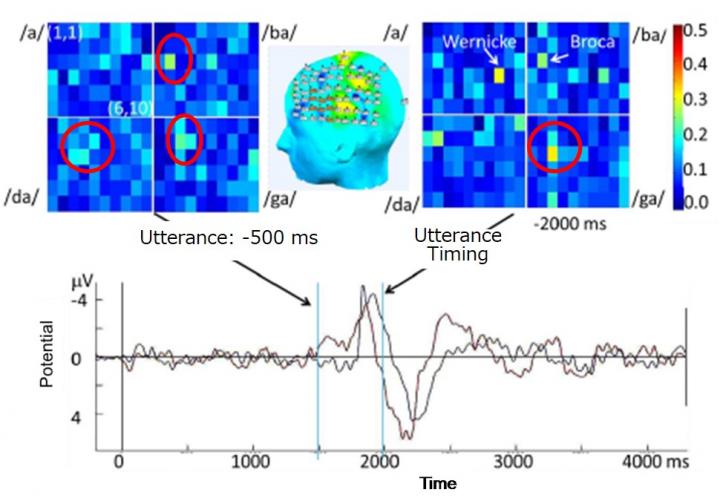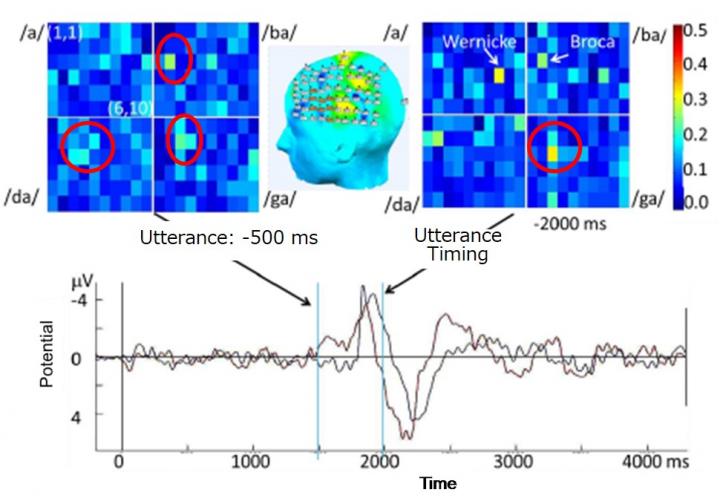
Credit: COPYRIGHT (C) TOYOHASHI UNIVERSITY OF TECHNOLOGY. ALL RIGHTS RESERVED.
A research group, including Emeritus Professor Tsuneo Nitta, Professor Junsei Horikawa, and Assistant Professor Shunji Sugimoto at Toyohashi University of Technology along with Associate Professor Koichi Katsurada of Tokyo University of Science, has developed a technology that can recognize the numbers 0 to 9 with 90% accuracy using brain waves, or electroencephalogram (EEG), while uttering the numbers. Furthermore, the technology has also realized the recognition of 18 types of Japanese monosyllables from EEG signals with 60% accuracy, which shows the possibility of an EEG-activated typewriter in the near future.
The details of this research will be presented at Interspeech 2017 held in Stockholm in August. http://www.interspeech2017.org/
The research group has collected EEG-data while uttering Japanese digits and monosyllables. Regarding these data, the group investigated digit and monosyllable recognition experiments.
Up until now, speech-decoding from EEG signals has had difficulty in collecting enough data to allow the use of powerful algorithms based on 'deep learning' or other types of machine learning. The research group has developed a different research-framework that can achieve high performance with a small training data-set. The new framework is based on holistic pattern recognition using category theory, or composite mapping, in which a dual space and a tensor space including exterior algebra are introduced.
In the experiment of spoken-digit recognition from EEG signals, 90% recognition accuracy was achieved. At the same time, 61% accuracy in 18 Japanese monosyllable recognition was achieved outperforming performance in previous research (humans have sufficient intelligibility of sentences with an 80% monosyllable recognition rate).
Emeritus Professor Nitta and his group aim to develop a 'Brain Computer Interface' that recognizes utterances without voicing, or speech imagery. This technology may enable handicapped people, who have lost the ability of voice-communication, to obtain the ability once again. It is also expected that the technology would give a healthy person the most natural interface without any limitations as well.
Furthermore, the research group plans to develop a device that can be easily operated with fewer electrodes and connected to smartphones within the next five years.
###
Funding
This research was funded by the Ministry of Education, Culture, Sports, Science and Technology and the Japan Society for the Promotion of Science Research Grant 16K00251.
We will hold a press conference on April 18 to present the details of this research at Toyohashi University of Technology.
Media Contact
Yuko Ito
[email protected]
############
Story Source: Materials provided by Scienmag





